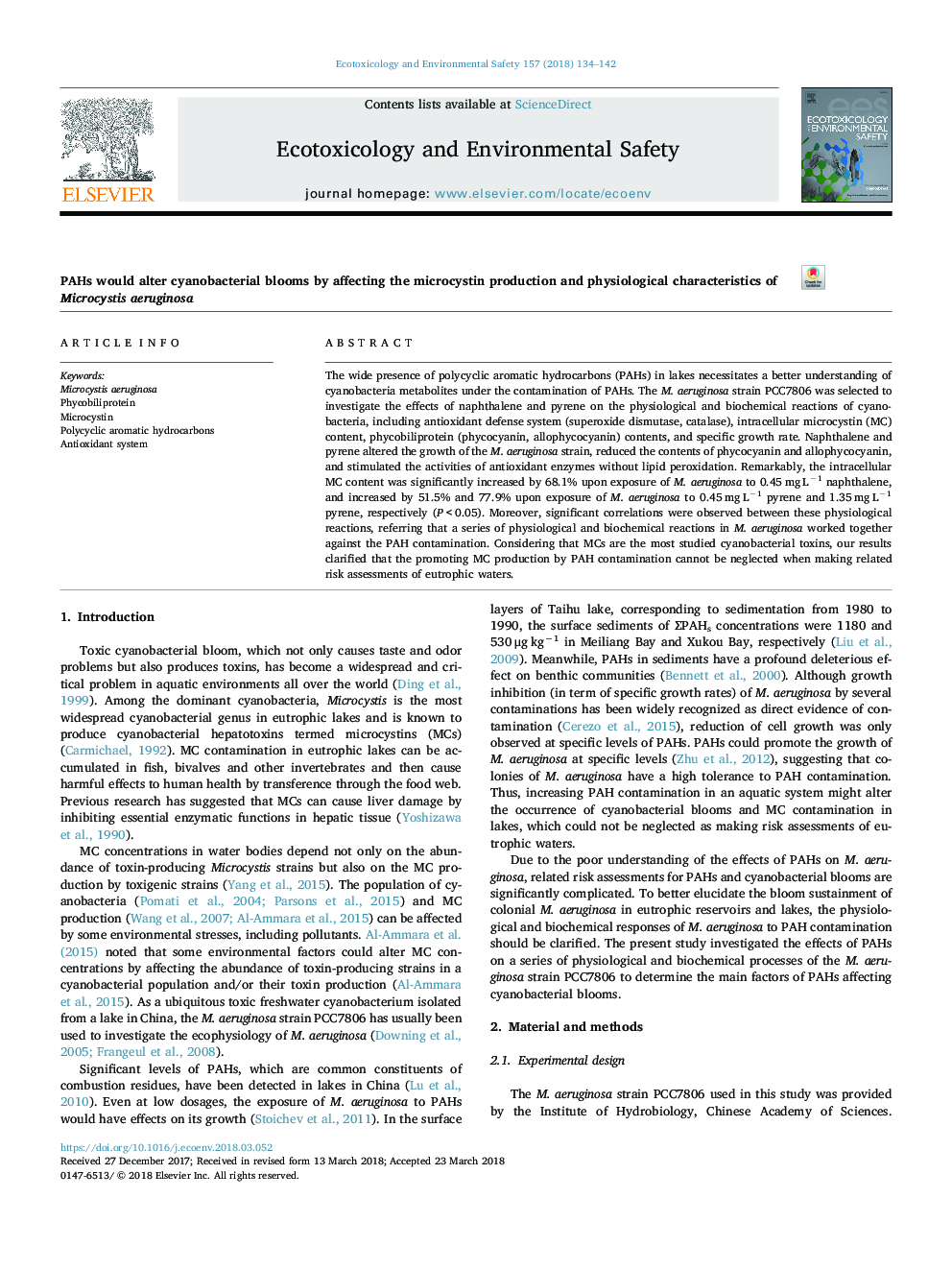| Article ID | Journal | Published Year | Pages | File Type |
|---|---|---|---|---|
| 8853816 | Ecotoxicology and Environmental Safety | 2018 | 9 Pages |
Abstract
The wide presence of polycyclic aromatic hydrocarbons (PAHs) in lakes necessitates a better understanding of cyanobacteria metabolites under the contamination of PAHs. The M. aeruginosa strain PCC7806 was selected to investigate the effects of naphthalene and pyrene on the physiological and biochemical reactions of cyanobacteria, including antioxidant defense system (superoxide dismutase, catalase), intracellular microcystin (MC) content, phycobiliprotein (phycocyanin, allophycocyanin) contents, and specific growth rate. Naphthalene and pyrene altered the growth of the M. aeruginosa strain, reduced the contents of phycocyanin and allophycocyanin, and stimulated the activities of antioxidant enzymes without lipid peroxidation. Remarkably, the intracellular MC content was significantly increased by 68.1% upon exposure of M. aeruginosa to 0.45â¯mgâ¯Lâ1 naphthalene, and increased by 51.5% and 77.9% upon exposure of M. aeruginosa to 0.45â¯mgâ¯Lâ1 pyrene and 1.35â¯mgâ¯Lâ1 pyrene, respectively (Pï¼0.05). Moreover, significant correlations were observed between these physiological reactions, referring that a series of physiological and biochemical reactions in M. aeruginosa worked together against the PAH contamination. Considering that MCs are the most studied cyanobacterial toxins, our results clarified that the promoting MC production by PAH contamination cannot be neglected when making related risk assessments of eutrophic waters.
Keywords
Related Topics
Life Sciences
Environmental Science
Environmental Chemistry
Authors
Min Zhang, Xiucui Wang, Jiayu Tao, Shuang Li, Shupeng Hao, Xuezhu Zhu, Yajun Hong,
